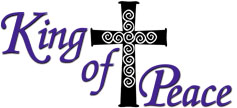

|
The DaVinci Disclaimer “It's not theology or history.” That statement is from Ron Howard, Director of The DaVinci Code in response to recent calls for a disclaimer at the start of the movie stating that the film is a work of fiction. Howard went on to tell The Los Angeles Times that “Spy thrillers don't start off with disclaimers” and neither will this new flick. The controversy comes as the movie and book claim that Jesus married Mary Magdalene and fathered children—a claim that many flakes and almost no reputable historians or theologians hold as true. That’s no problem as the book is a novel. It is meant to be fiction. But the way Brown crafts his fiction can mislead some to think that the claims the book’s characters make as fact are true. Dan Brown used sources for The DaVinci Code with an interesting history of their own. While the media have frequently repeated that Brown relied heavily on the book Holy Blood, Holy Grail. What you may not know is that book, written in the 1970s, was based on a BBC series by Henry Lincoln on some parchments discovered in the 1950s which told of the secret group the Priory of Sion. The parchments were found by Pierre Plantard in the former home of Bérenger Saunière in Rennes-le-Château, France. Saunière was himself a defrocked Catholic priest who had amassed a fortune that he used to create an impressive estate. That estate was inherited by his maid of many years. Noel Corbu met the maid who inherited Saunière’s estate and created a business deal in which Corbu and his wife opened an inn and restaurant in the Tour Magdala (Tower of Mary Magdalene). Corbu created a short story which he recorded on tape for visitors to generate interest in the Tour Magdala Restaurent. On the tape, Corbu told of Saunière restoring the church and in the process uncovering hidden scrolls revealing the location of a treasure even as it told of the secret society The Priory of Sion. The story of the discovery was told in the 1967 book L’Or de Rennes (meaning The Gold of Rennes), which unlike The DaVinci Code claimed to be a non-fiction book. I know there are a lot of names to grab hold of here, but notice that Brown heavily relied on Holy Blood, Holy Grail, which itself relied on L’Or de Rennes, which relied on the tape Noel Corbu created to attract tourists to his restaurant. Lawsuits over money from book sales are not new to this story because when Plantard’s two co-authors failed to receive royalties on L’Or de Rennes, they admitted publicly that the whole thing was based on parchments they forged using Corbu’s story as its basis. The Priory of Sion (as described in the book) and its secrets were fiction, not fact as L’Or de Rennes claimed. Dan Brown knew of this back story as he uses Saunière as the name of one character and Plantard as the lead female, Sophia’s, true last name. And while he was recently sued by Holy Blood, Holy Grail authors Michael Baigent and Richard Leigh, their part in his book is arguably played by Leigh Teabing, whose name is a combination of one of the authors’ last names with an anagram of the other authors’ last name. While in court, his lawyers properly claimed his work of fiction did not rely on their book alone, but in the book itself he gave the two authors a fairly major role. The above is my disclaimer on Dan Brown’s sources based on research you can replicate by trying the above names in Google. It is also referenced in some of the books published to debunk The DaVinci Code. But all of this may well miss the point as The DaVinci Code is a work of fiction. I only take the trouble as his work has caused many to wonder about the sources of our faith. This week, I have spelled out some of Brown’s sources. In a future column I will share what we know historically concerning our sources for knowing about Jesus of Nazareth. In the meantime, I would note that there is no reason to have a disclaimer before The DaVinci Code stating the movie is a work of fiction. Here is what will happen disclaimer or no disclaimer. The movie will draw large crowds of people who will decide for themselves what they think. Most will think about the merits of the movie only—namely was it entertaining? Many, however, will consider their faith, positively and negatively, in light of what they hear and see in the movie. Most will just find it something to talk about. All of this is what DaVinci author Dan Brown said he wished for the book in a page at his website which states, “My hope in writing this novel was that the story would serve as a catalyst and a springboard for people to discuss the important topics of faith, religion, and history.” Of course, Brown also hoped to sell books. He certainly has done that. But, if nothing else, the book has sparked some interesting discussions and the movie is bound to do the same. Just let your curious friends know that the scholarship behind the Gospels is much sounder than the supposed scholarship behind The DaVinci Code lead one to believe. But that’s fine because, Brown’s book is fiction after all. (The Rev. Frank Logue is pastor of King of Peace Episcopal Church in Kingsland.) |
King of Peace Episcopal Church + P.O. Box 2526 + Kingsland, Georgia 31548-2526